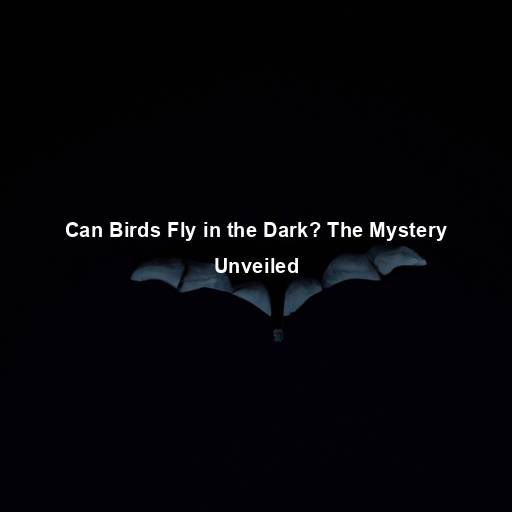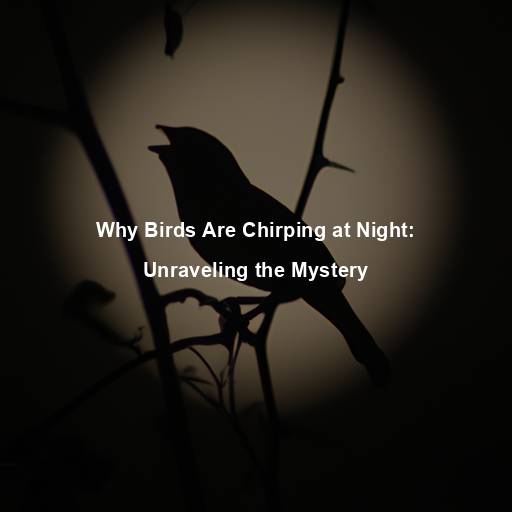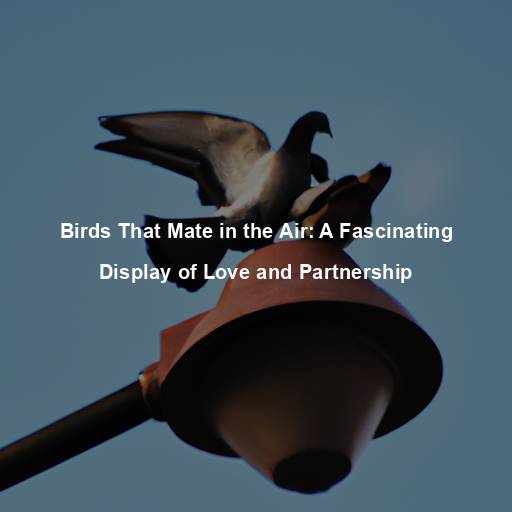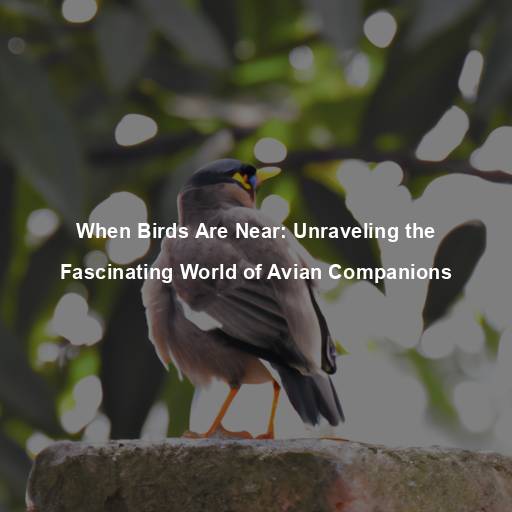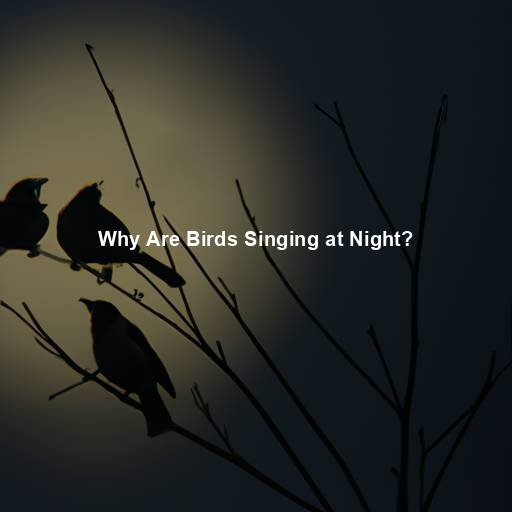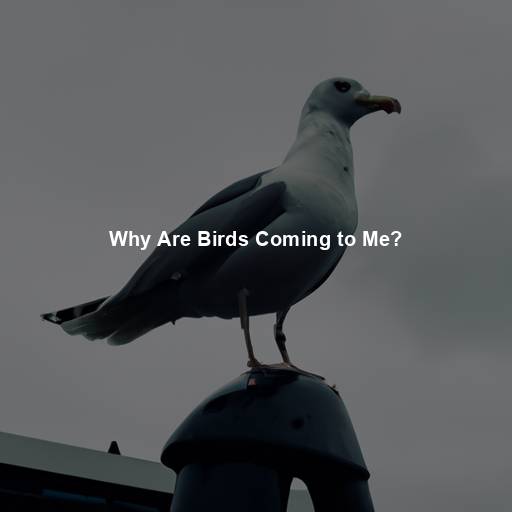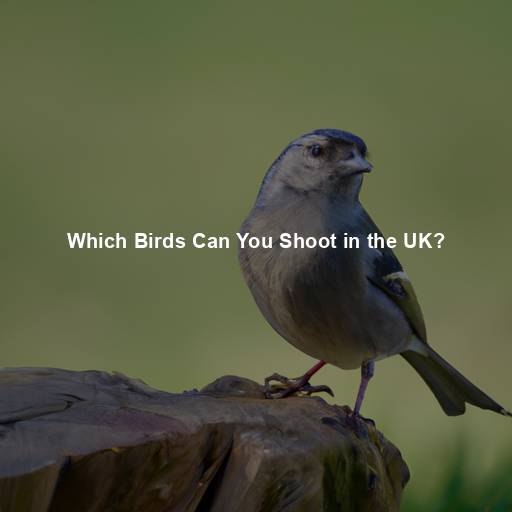Can Birds Fly in the Dark? The Mystery Unveiled
Last Updated on July 8, 2023 by Evan
Contents [hide]
- 1 Understanding the Fascinating World of Birds
- 1.1 The Anatomy of Avian Flight
- 1.2 The Role of Vision in Avian Navigation
- 1.3 Navigating the Night Sky
- 1.4 The Remarkable Adaptations of Nocturnal Birds
- 1.5 Migration: A Journey Through Darkness
- 1.6 Navigational Strategies during Migration
- 1.7 The Role of Inherited Knowledge
- 1.8 Limited Visibility
- 1.9 Echolocation: A Tool for the Night
- 1.10 Sensory Enhancements
- 1.11 Navigating Urban Environments
- 2 The Wonders of Nocturnal Birds
- 3 Migration: A Journey Through the Dark
- 4 The Beauty of Birds in the Dark
- 5 FAQs when the birds are flying
Understanding the Fascinating World of Birds
Throughout the ages, birds have aroused our curiosity and wonderment, as their magnificent wings carry them effortlessly across the boundless expanse of the heavens. Yet, a peculiar notion lingers in the recesses of our minds – can these feathered creatures soar through the obscurity of night? It is a conundrum that has ensnared the inquisitive minds of scientists and enthusiasts alike. Brace yourself as we embark on a thrilling journey to unravel the enigmatic secrets of avian flight and discern if these aviators can truly navigate the abyss of darkness with grace and finesse.
The Anatomy of Avian Flight
As we embark on this captivating exploration, let us marvel at the awe-inspiring complexities intricately woven into the very fabric of avian anatomy. The sheer magnificence of birds effortlessly navigating the vast expanse of the sky is a testament to the remarkable adaptations bestowed upon them. Embrace the wonderment as we unravel the delicate balance between their ethereal bodies, aerodynamic feathers, and robust wing musculature. Furthermore, their enigmatic respiratory system beckons us to fathom the indispensable role it plays in their graceful flight, ensuring a constant infusion of life-sustaining oxygen.
Vision plays a vital role in the lives of birds. Their keen eyesight allows them to spot prey from great distances and navigate through their surroundings with precision. During the day, birds rely on visual cues such as landmarks and the position of the sun to orient themselves in the environment. But what happens when darkness falls?
Contrary to popular belief, many bird species are capable of flying in low-light conditions, including twilight and even complete darkness. Nocturnal birds, such as owls and nightjars, have adapted to hunting and navigating in the dark. These birds possess specialized adaptations that enhance their ability to see in dim light, such as larger eyes and an increased number of light-sensitive cells in their retinas.
The Remarkable Adaptations of Nocturnal Birds
Nocturnal birds have evolved a range of fascinating adaptations to thrive in their nighttime habitats. For instance, the eyes of owls are uniquely designed to gather as much available light as possible, thanks to their large size and tubular shape. This allows them to see in near-total darkness and locate their prey with astonishing accuracy. Additionally, the feathers of nocturnal birds are specially adapted to muffle sound, enabling them to fly silently through the night.
Migration: A Journey Through Darkness
Every year, as the seasons change, countless birds embark on incredible odysseys, traversing unimaginable distances with an unwavering determination. These tireless travelers face numerous challenges along their migratory paths, but perhaps none as perplexing as the cloak of darkness that engulfs them during their airborne adventures. How do these feathered navigators overcome the absence of visual cues and continue their epic journey towards their final destination? The enigma of nocturnal migration leaves us in awe and begs us to unravel the secrets of these night-crossing avian pioneers.
Migration is a truly awe-inspiring phenomenon that showcases the intricate strategies and sensory prowess of our avian friends. With a bewildering array of cues at their disposal, birds embark on their long and arduous journeys, weaving their way through the vast expanse of the sky. From celestial cues, which serve as twinkling cosmic signposts, to the Earth’s magnetic field acting as an invisible guiding force, these feathered navigators traverse with remarkable precision. As if this weren’t enough, the symphony of acoustic cues, emanating from crashing waves and ethereal gusts of wind, adds yet another layer of complexity to their perplexing journey.
The Role of Inherited Knowledge
The enigmatic world of avian navigation continues to baffle scientists as they delve deeper into the intricacies of this phenomenon. As the research unfolds, a captivating hypothesis emerges that hints at a hereditary link between birds and their mysterious flight routes. Remarkably, it appears that these intrepid creatures possess an innate compass, guiding them through the vast expanse of the skies, defying the limitations of their visual landscape. The ethereal dance between experienced mentors and their eager disciples reveals that this extraordinary knowledge is passed down from generation to generation, shrouded in an enigmatic connection that leaves us awestruck.
Limited Visibility
Navigating through the dark can be a real conundrum for our feathered friends. Deprived of the comforting rays of sunshine, their path becomes a labyrinth of uncertainty. Yet, birds are not ones to succumb to the whims of darkness. Instead, they have unearthed an array of ingenious tactics to tackle this enigma head-on.
Echolocation: A Tool for the Night
Did you know that echolocation, typically attributed to the remarkable ability of bats, is actually employed by certain bird species as well? It’s mind-boggling how these winged creatures, albeit not as proficient as bats, emit these high-pitched calls and rely on the resulting echoes to navigate their environment. This extraordinary skill enables them to effortlessly detect any objects or barriers that might impede their flying, showcasing their resilience even in the absence of light.
Sensory Enhancements
Navigating in the dark poses unique challenges for birds, as they lack the visual cues that are readily available to them during the day. To overcome this hurdle, our feathered friends rely on their other senses to guide them through the night. Their keen sense of hearing becomes intensified, enabling them to pick up on subtle shifts in sound patterns and use this information to avoid obstacles and maintain their bearings in the darkness. It’s truly mesmerizing how these creatures adapt and overcome the perplexities of their environment.
Birds face additional challenges when flying in urban environments at night. The artificial lights present in cities can disorient them, leading to collisions with buildings or other structures. Light pollution can also interfere with their ability to navigate using celestial cues, making it more difficult for them to stay on course.
The Wonders of Nocturnal Birds
Nocturnal birds, such as owls and nightjars, are particularly fascinating creatures that have evolved remarkable adaptations to thrive in the dark. Let’s delve into the extraordinary characteristics that make these birds so well-suited for their nocturnal lifestyles:
Owls: Silent Hunters of the Night
Owls are renowned for their exceptional hunting skills and stealthy nature. These birds possess a range of adaptations that enable them to locate and capture prey in the dark. Their wings are specially designed to reduce turbulence and noise, allowing them to fly silently. This silent flight gives them a distinct advantage when hunting unsuspecting prey.
Nocturnal Vision
When the sun sets and darkness descends upon the world, a mysterious group of creatures emerges from the shadows – the nocturnal birds. These extraordinary avian beings possess an enigmatic feature that sets them apart: their eyes. Evolution has bestowed upon them a gift of heightened sensitivity to embrace the dimly lit realm, allowing them to navigate effortlessly through the night. Their retinas, enriched with a greater number of rod cells, become the soldiers in their quest for light while an enigmatic layer known as the tapetum lucidum dances with photons, reflecting them back into their eyes and illuminating their path in the darkness.
Feathers: A Stealthy Advantage
When the moon casts its enigmatic glow and darkness envelops the world, nocturnal birds emerge as mysterious guardians of the night. Their ethereal feathers shroud them in a cloak of perplexity, enabling them to navigate and hunt with utmost dexterity. These astonishing avian adaptations are shrouded in secrecy, concealed within the intricate patterns and surreal colors that adorn their plumage. From serrated leading edges that whisper through the air to camouflage that merges seamlessly with the shadows, these birds exist as enigmas in the moonlit realm.
Nightjars: Masters of Camouflage
One of nature’s most enigmatic creatures, nightjars, commonly referred to as goatsuckers, possess an extraordinary knack for disguising themselves amidst their surroundings. With a cloak of intricately patterned feathers, these birds are masters of concealment, seemingly vanishing into thin air during daylight hours. It’s this uncanny ability to blend seamlessly with their environment that grants them an unparalleled shield against potential threats, ensuring their covert nocturnal hunts go unnoticed. From their cryptic allure to their mysterious hunting techniques, nightjars continue to captivate and baffle both scientists and nature enthusiasts alike.
Migration: A Journey Through the Dark
The awe-inspiring phenomenon of migration has captivated researchers and bird enthusiasts alike, as it unveils the extraordinary ability of these winged creatures to embark on arduous voyages across vast distances in pursuit of ideal habitats for reproduction and sustenance. However, one perplexing enigma persists: how do these migratory birds steadfastly traverse the cover of night, when even the sun’s guiding light recedes? Unveiling the secrets of their celestial navigation and magnetic sensitivity, researchers strive to shed light on this mesmerizing aspect of avian migration, a testament to the stunning adaptability of the natural world.
One cannot help but be captivated by the enigmatic world of bird migration. The inexplicable ability of these majestic creatures to navigate their way through the vast skies using celestial cues is nothing short of astounding. Through the ancient art of stargazing, birds maintain an unwavering path, defying the darkness of the night and effortlessly maneuvering towards their destination without the aid of visual landmarks. It is in these awe-inspiring moments that we are reminded of the exceptional wonders of the natural world.
Magnetic Fields: A Guiding Force
Birds, fascinating creatures of the sky, possess a remarkable skill that leaves us in awe – the ability to detect and navigate using the Earth’s magnetic field. Imagine, within their beaks or eyes lie magnetoreceptors, secret agents of orientation that allow them to perceive the magnetic field and utilize it as their own personal compass. This bewildering internal tool guides their migratory paths, enabling them to stay on track even when visual cues are nowhere to be found. It’s truly a mesmerizing spectacle of nature’s wonders at play.
Experience and Innate Knowledge
Migration is a jaw-dropping phenomenon that defies the limits of mere genetics and instinct. It’s astonishing to find that young birds actually acquire the mind-bending skill of navigation from wise, older birds, who graciously share their hard-earned knowledge from one generation to the next. This mind-boggling blend of cultural inheritance and natural intuition equips our feathered friends to conquer even the darkest of skies and gracefully journey towards their ultimate destinations.
The Beauty of Birds in the Dark
The awe-inspiring prowess of birds taking to the skies under the cloak of darkness never fails to astound us. From the enigmatic stealth of owls, gliding through the night with a hushed grace, to the mesmerizing camouflaged elegance of nightjars, these avian geniuses paint a picture of adaptability and resourcefulness that leaves us utterly perplexed. And let’s not forget about the remarkable navigational abilities of migratory species, traversing vast distances with an innate sense of direction that defies all logical explanation. These birdly wonders continue to captivate our imagination and ignite our curiosity, reminding us of the limitless wonders the natural world has to offer.
As we delve into the enigmatic realm of avian flight and navigation, a profound sense of awe washes over us, revealing the breathtaking complexity of birds’ adaptations. Their uncanny aptitude to triumph over shadows and flourish in dimly-lit environments serves as an undeniable testament to the boundless marvels dwelling within the depths of our natural world.
So, the next time you find yourself pondering the question of whether birds can fly in the dark, remember the remarkable capabilities of these winged creatures. They navigate the night sky with grace and finesse, reminding us of the boundless possibilities that exist in the world of birds. ## The Challenges of Flying in the Dark
While birds are indeed capable of flying in the dark, it is not without its challenges. Navigating through the night poses unique obstacles that birds must overcome to ensure their safety and successful passage. Let’s explore some of the difficulties they encounter:
FAQs when the birds are flying
When do birds start flying?
Birds typically start flying shortly after they hatch from their eggs. Once their feathers have fully developed and they have gained enough strength in their wings and muscles, they are ready to take flight. The exact timing may vary between bird species, but it generally occurs within a few weeks to a couple of months after hatching.
How do birds learn to fly?
Birds learn to fly through a process called fledging. Fledging involves the young birds leaving their nest and attempting short flights. Initially, these flights may be clumsy and unstable, but with practice, they gradually improve their flight skills. Parent birds play a crucial role during this learning process by providing guidance and encouragement to their offspring. The young birds continue practicing flying until they become proficient.
Why do birds fly in flocks?
Birds often fly in flocks for various reasons. One primary reason is for improved safety and protection. Flying in large groups reduces the risk of individual birds being preyed upon by predators. Additionally, flocking allows birds to conserve energy by taking advantage of the airflow dynamics created by the birds in front, which makes flying easier and more efficient. Flocking behavior also enables birds to communicate and coordinate their movements better, making it easier to find food, navigate, and migrate.
How fast can birds fly?
Birds, those magnificent creatures of the sky, possess a remarkable disparity in their flight speeds. Akin to a tapestry woven with complexities, their velocities are as diverse as their hues. From the humble common pigeon, soaring steadfastly at a modest pace of 55 miles per hour (88 kilometers per hour), to the awe-inspiring falcons, who seemingly defy the laws of nature as they plummet towards prey with breathtaking speeds exceeding 200 miles per hour (322 kilometers per hour). Yet, let us not forget that flight, like life itself, is an intricate dance between myriad variables – size, wing structure, and the whims of Mother Nature, all shaping the symphony of aerial prowess.
How high can birds fly?
Birds have been recorded flying at different altitudes, but it mainly depends on their species. Some large birds, like vultures and eagles, are known to soar at heights exceeding 10,000 feet (3,048 meters) in the sky. Migratory birds also have the ability to reach high altitudes during their long-distance journeys. However, most small songbirds tend to fly at lower altitudes, generally within a range of a few hundred to a couple thousand feet above the ground.
Can birds fly long distances without resting?
Many bird species are capable of flying substantial distances without resting. Migratory birds, in particular, undertake long-distance flights during their seasonal migrations, covering thousands of miles. They have developed various physiological adaptations to enable endurance flights, such as efficient metabolisms, optimized energy storage, and strong flight muscles. However, it is important to note that most birds do require periods of rest and stopovers to refuel and recover during extended flights.
Birds employ multiple navigational strategies during flight. They use a combination of visual cues, such as landmarks and celestial bodies, to maintain their course. Some species also possess a magnetic sense, allowing them to detect the Earth’s magnetic field and use it for navigation. Additionally, birds have an incredible ability to remember and recognize familiar territories, which aids in their navigation. Recent studies have also suggested that birds may have an internal map-like representation of the Earth’s magnetic field, further enhancing their navigation skills.

